|
An essential aspect of the amateur micro-waver in the past was traveling to round tables, VHF Convention, mobile rallies and junk sales, all in the quest for that essential piece of plumbing hardware. Presented here are a few of those must have items from the 1980s that somehow never were actually required.
Cross Coupler
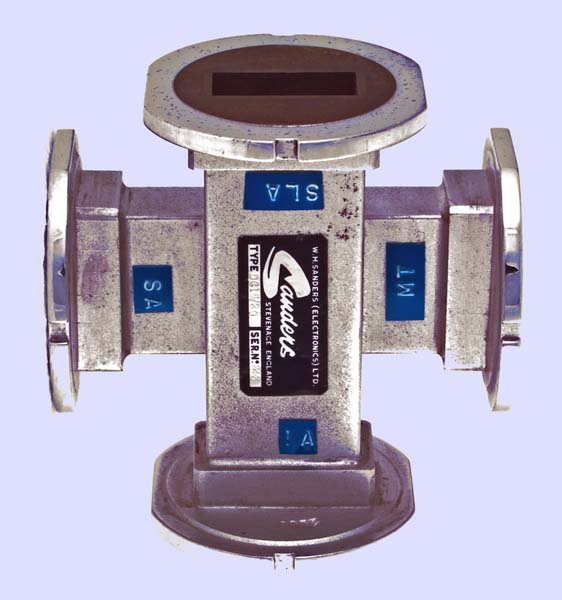
The first in this collection is a directional coupler. This professional piece of WG16 equipment has two pieces of waveguide arranged at right angles one to another with broad faces joining. The directional coupler is a component for coupling a proportion of the RF traveling along one piece of guide into the other.
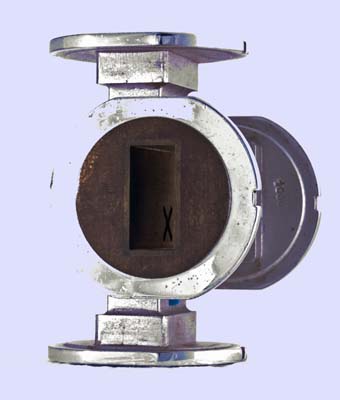
The arms of the coupler are 76 mm long and terminate in round WG16 flanges. The whole outside is chrome plated. The picture above clearly shows one of the two X slots that form the active coupling. For more details on cross couplers See 10 GHz Gunn Oscillator and Cross Coupler.
Waveguide Attenuator
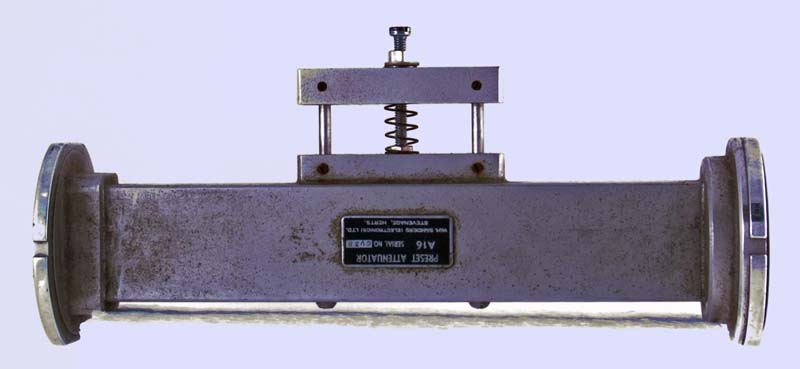
The item above is a pre-set waveguide attenuater. Inside the waveguide is a piece of flat resistive material that lies along the length of the narrow face and attached to the outside world by rods connected to the adjustment mechanism. Although not calibrated this is a useful device for setting-up portable equipment. If the local beacon is too strong and difficult to accurately locate in azimuth, pop in the attenuator and the job becomes much easier.
Waveguide Switch
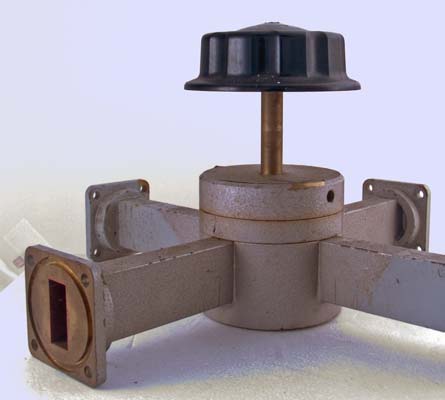
When planning to build a piece of narrow-band equipment in about 1986, it was suggested that the route to follow was low noise source, multiplier & amplifier, varacter multiplier to 10 GHz and modulated with NBFM. To switch the dish from TX to RX a waveguide switch would be ideal. This magnificent beast cost £15.00 at a round table at Crawley Court. The box, micro-switches and outer cover has long since been discarded. Inside the central housing are two quarter circle WG16 channels. Below the knob, the top of the housing holds a spring loaded ball bearing that locates into notches. This gives the switch defined locating positions where the internal waveguide mates with the outer ports.
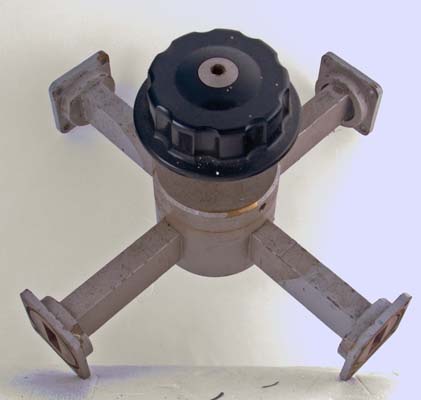
In addition to switching for narrow-band equipment, the waveguide switch is an ideal, albeit heavy, way to build a second generation wide-band tranceiver. This switch is 220 mm from flange to flange and from base to top is 123 . Being brass with a near solid hub it is also very heavy.
|